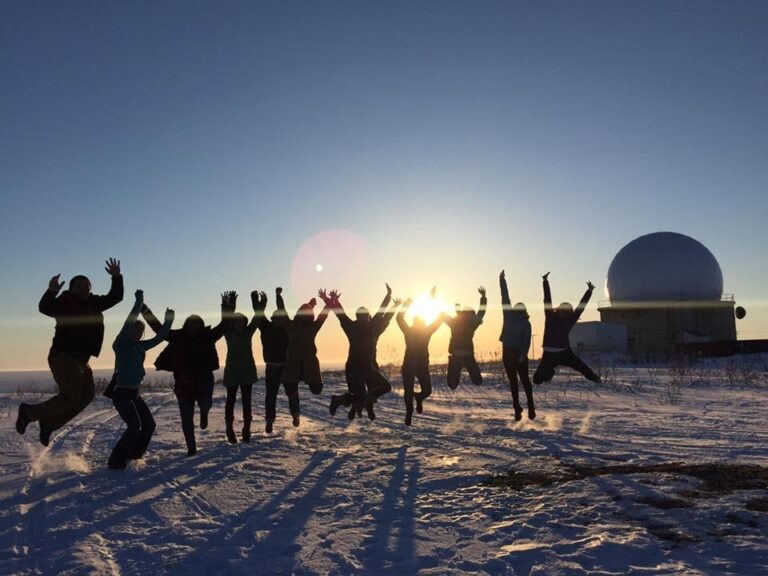Our History
For more than 10,000 years, Alaska Natives have served as stewards and caretakers for the lands and waters to which they belong. This reciprocal relationship is based on respect, honor, and spiritual balance. However, in modern days, this stewardship and caretaking has been challenged by multi-layered governance structures, extractive industries, the removal of people from their traditional lands, and the criminalization of practicing traditional ways of life. This has resulted in an imbalance in the ecosystem, and Alaska’s Indigenous peoples are looking for ways to restore balance. What does “just transition” mean through the lens of Indigenous people? It means revitalizing the Indigenous worldviews that have been colonized, assimilated, and stolen from traditional societies and cultures.

NPA History
In April 2016, a large group of Alaska Natives gathered in Kikiktagruk, the traditional Iñupiaq name for the community now known as Kotzebue, in Northwest Alaska. Kikiktagruk is a traditional regional hub, with three major river systems draining into the Kotzebue Sound: the Noatak River, Kobuk River, and Selawik River. The participants of this gathering were united by a common goal: to find ways to align Native knowledge, values, and ways of being with governance structures and regulatory systems impacting their daily lives. The room held policy experts, artists, stewards of the lands and waters, traditional healers, elders, and many young Alaska Natives, all ready to shift a Western system to be accountable to the traditional values of Alaska Native societies.
The 25 Alaska Natives who came together at this retreat focused on the principle of creating a system that would support their well being. They identified five separate elements that embody what a just transition framework looks like:
- Be Well: Indigenous wellbeing founded on respect and understanding
- Be Grounded: Indigenous Education for All
- Be Sacred: Honor and Defend Indigenous Spirituality
- Be Sustained: Sustainable Economies of Place Founded on Respect
- Be Heard: Amplify Indigenous Voices
- Be Seen: Media and Messaging by Indigenous Artists
Following the 2016 retreat in Kikiktagruk, volunteers chose the name Native Vision under which to organize, now known as Native Peoples Action Community Fund (NPACF). NPACF is directed by the leadership and guidance of a steering committee to facilitate an Alaska Native statewide grassroots movement to protect Native ways of life and promote the well-being of Alaska Native peoples.
Soon after, Native Peoples Action, a statewide 501(c)(4), was incorporated. NPA’s mission is to take a stand, work together, and mobilize action to ensure Alaska Natives are heard at all levels of policymaking and to transform social and political systems. NPACF’s mission has remained true to the founding documents written from the Kotzebue gathering and continues to work toward advancing the transition to a just society that provides for the continuation of Alaska Native ways of life and the well-being of Alaska Native peoples. Both of these organizations listen to and directly respond to the needs of Alaska Native communities as they align with the shared mission of protecting Alaska Native ways of life while simultaneously uplifting communal wellbeing. Some of the ways this work is being done is through advocacy, education, and awareness, strengthening public policy and programming, diversifying government, increasing involvement in decision-making processes, and engaging youth.

